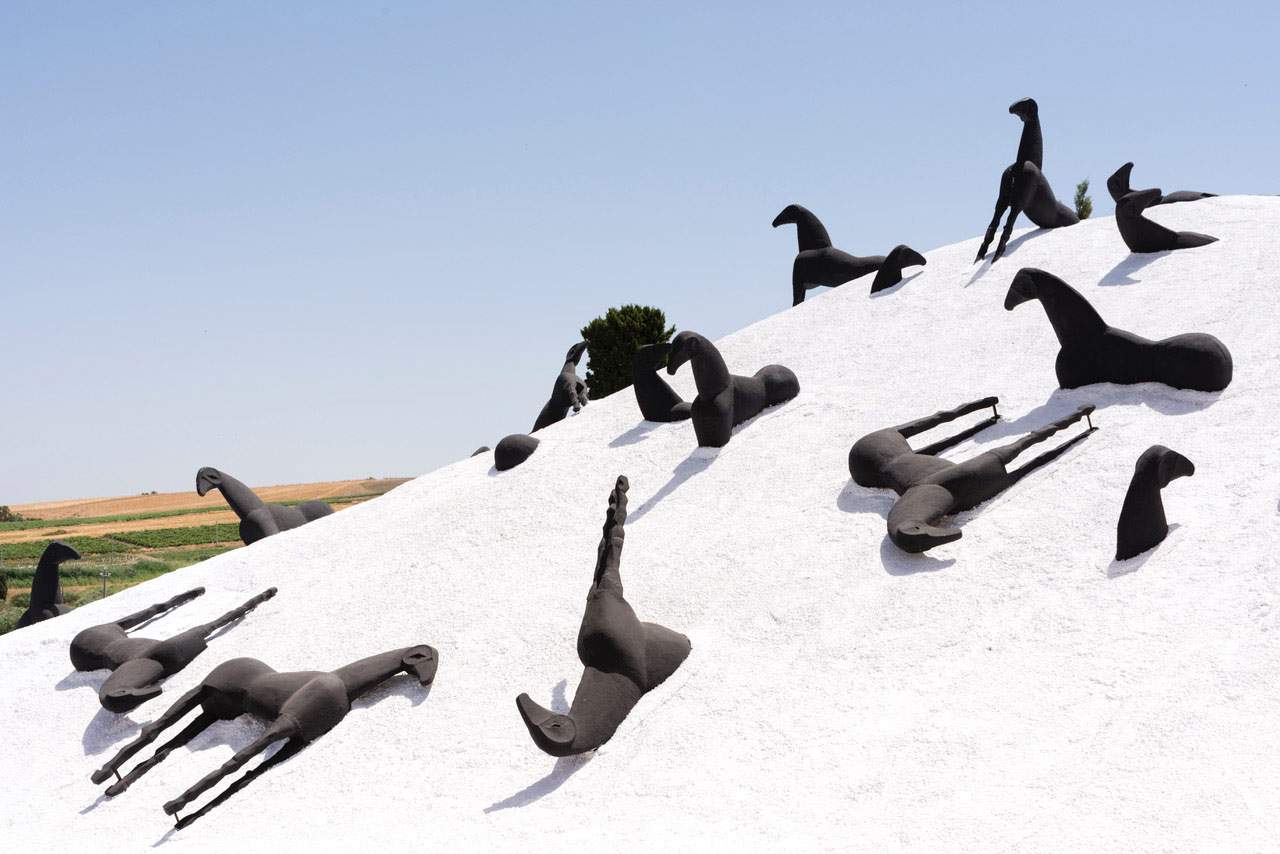The Orestiadi Foundation of Gibellina (Trapani) reopens on June 27, and it does so with the exhibition Museo a cielo aperto, an ideal tribute to Ludovico Corrao (Alcamo, 1927 - Gibellina, 2011), founder of the cultural event that gives its name to the foundation, now an inmportant collection of contemporary art. The exhibition, which opens on the anniversary of the senator’s birth, a symbolic figure in the reconstruction of the Belice region after the 1968 earthquake, runs until Aug. 8 and is an entirely open-air exhibition tour through the places that have made Gibellina one of the most evocative sites in all of Sicily.
With Museo a cielo aperto, the Foundation presents the new acquisitions of the contemporary art collection and, as mentioned, pays tribute to Corrao who made the utopia of the city of artists concrete by calling together in the refounded Gibellina new artists such as Burri, Consagra, Accardi, Isgrò, Pomodoro, Paladino, Nunzio, Schifano, Quaroni, Venezia, Mendini, Purini, Levi, Beuys, Robert Wilson, Philip Glass, Thierry Salmon, Boetti, Scialoja, Turcato, Necrosius, Kusturica, Cage, Pennisi, Kokkos, Giovanna Marini, Zavattini, to name but a few, making the Orestiadi, in the 1980s and 1990s, one of the most interesting and innovative creative laboratories in Europe.
The exhibition itinerary proposed for the occasion winds through the works scattered in the immense outdoor spaces of Baglio di Stefano, among which stand out, in the main courtyard, Mimmo Paladino ’s famous Montagna di Sale (made for the 1990 Orestiadi, among the most great works by the master of Transavantgarde), Pietro Consagra’s bifrontal sculpture, Enzo Cucchi’s Man with a Load of Moons, placed in the garden among century-old palm trees, the marble and obsidian installation by British artist Peter Briggs, the “Mother Church” by the couple Ben Jacober and Yannick Vu, the soft bronze parabolas of Siderale by Michele Cossyro, installed in the curtain of the granary, and the glazed ceramic tiles by Croce Taravella, who with bright colors and a textural high relief makes the markets of Palermo and those of Tunis dialogue.
The itinerary also includes overlooks to some of the interiors, to the baronial house, now home to the Museum of Mediterranean Textures (for years under the direction of Achille Bonito Oliva), and to the ateliers with works by Milena Altini, Francesco Impellizzeri, and Emilio Angelini. In one of the ateliers it is also possible to see the “Mediterranean Carpet” by Jonida Xherri, an Albanian artist who has stitched together stories, threads and pearls in a collective project carried out together with migrants from the first reception centers of the municipalities bordering Gibellina, in a weaving of cultures symbolically united in the sign of art.
The exhibition, as mentioned, will also be an opportunity to present the Foundation’s new acquisitions to the public. These include Mustafa Sabbagh’s installation entitled MKUltra: we are infinite and eternal, created by the Italian-Jordanian artist for the 2019 edition of the Gibellina Photoroad international photography festival. Of more recent times speak the works of Giacomo Rizzo and Costanza Ferrini, which are presented to the public for the first time, becoming part of the contemporary art collection. Giacomo Rizzo, an artist who has made direct contact with nature and the land the common thread of his poetics, presents Where is your nature?, the latest work produced during an artistic residency in New York. The sculpture, placed in the floor above the courtyard of the Baglio chapel, represents the organicity of matter that envelops the geometries of the city, in the wake of what has happened in recent months with the lockdown and the possibility of nature taking possession of new spaces. Costanza Ferrini also reflects on recent historical events, recounting in her Alfabeto degli occhi (2020), a video created on a Roman terrace at the time of the quarantine, the everydayness of a moment that made us familiar, objects, gestures and new habits usually ignored.
You can visit the exhibition daily (except Mondays, which are closed) from 9 a.m. to 1 p.m. and 3 p.m. to 6 p.m. (last admission at 5 p.m.). Admission is free. For all information, log on to the Orestiadi Foundation website.
Image: the Salt Mountain by Mimmo Paladino. Ph. Credit Lusa Savattiere
 |
| An open-air museum. The Orestiadi Foundation of Gibellina reopens and presents new acquisitions |
Warning: the translation into English of the original Italian article was created using automatic tools. We undertake to review all articles, but we do not guarantee the total absence of inaccuracies in the translation due to the program. You can find the original by clicking on the ITA button. If you find any mistake,please contact us.